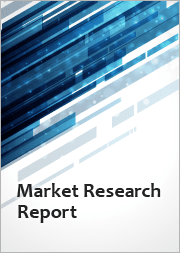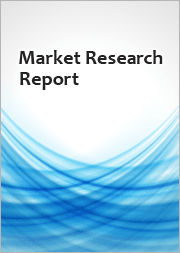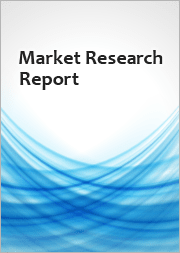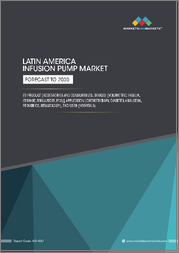
|
시장보고서
상품코드
1846106
세계의 혈액학 시장 : 제품별, 용도별, 지역별 범위 및 예측Global Hematology Market By Product (Hematology Analyzers, Flow Cytometers, Coagulation Analyzers), By Application (Drug Testing, Auto Immune Disease, Cancer, Diabetes Mellitus), By Geographic Scope and Forecast |
||||||
혈액학 시장 규모와 예측
혈액학 시장 규모는 2024년에 213억 5,000만 달러로 평가되었으며, 2024년부터 2031년까지 CAGR 7.38%로 성장하여 2031년에는 358억 5,000만 달러에 달할 것으로 예측됩니다.
혈액학은 혈액질환의 연구, 진단, 치료, 예방에 관한 의학의 한 분야입니다. 빈혈, 백혈병, 혈액 응고 장애 등 혈액과 관련된 다양한 질환이 포함됩니다.
혈액학은 빈혈, 백혈병, 림프종, 출혈성 질환 등의 진단과 치료에 사용됩니다. 혈액검사, 골수분석, 유전자 검사는 투약, 수혈, 골수 이식 등의 치료 전략의 지침으로 활용됩니다.
표적치료, 맞춤의료, 유전자 연구는 향후 몇 년 안에 혈액학에 혁명을 일으킬 것으로 예상됩니다. CAR-T 세포 치료, 유전자 편집과 같은 분자진단 및 치료의 혁신은 혈액학 치료의 정확성과 효능을 향상시켜 복잡한 혈액질환에 대한 더 나은 결과와 치료 가능성을 가져올 것으로 기대되고 있습니다.
세계 혈액학 시장 역학
세계 혈액학 시장을 형성하는 주요 시장 역학은 다음과 같습니다:
주요 시장 촉진요인
혈액질환 발생률 증가 : 빈혈, 백혈병, 림프종 등 혈액질환의 유병률 증가로 인해 혈액 진단 및 치료 솔루션에 대한 수요가 증가하고 있습니다. 이러한 질병이 전 세계적으로 증가함에 따라 고급 혈액학 제품 및 서비스에 대한 수요도 증가하고 있습니다.
기술 발전 : 첨단 혈액 분석기, 유세포 분석기, 유전자 검사의 개발로 진단 정확도와 치료 효과가 향상되고 있습니다. 이러한 발전은 환자 결과를 개선하고 진단 도구의 가용성을 확대함으로써 시장 성장을 촉진할 것입니다.
연구개발 투자 확대 : 제약기업과 연구기관은 연구개발에 대한 투자를 늘리고 있으며, 혈액질환의 새로운 치료법과 진단법 발견을 가속화하고 있습니다. 이러한 기술 혁신에 대한 강조는 시장 확대를 촉진하고, 미충족 의료 수요에 대한 새로운 해결책을 제시합니다.
정부 이니셔티브와 자금 지원 : 헬스케어 인프라 구축과 연구를 촉진하는 정부 정책은 시장 성장을 촉진하는 데 필수적입니다. 의료 서비스 접근성을 개선하고 의학 연구에 투자하는 프로그램은 진단 및 치료 능력을 향상시킴으로써 혈액학 시장 확대에 기여합니다.
주요 과제
첨단 기술의 높은 비용 : 첨단 혈액 분석기, 유세포 분석기, 기타 진단 도구는 고가이기 때문에 특히 자원이 부족한 환경에서는 보급을 저해할 수 있습니다. 이러한 높은 비용은 첨단 기술에 대한 접근을 제한하고 시장 성장을 저해하는 요인으로 작용하고 있습니다.
규제 및 컴플라이언스 문제 : 복잡한 규제 요건을 극복하고 새로운 혈액 검사 제품의 승인을 얻는 것은 어려운 일입니다. 지역마다 규제 기준이 다르기 때문에 제품 출시가 늦어지거나 신기술의 시장 도입에 소요되는 시간과 비용이 증가할 수 있습니다.
개발도상국의 의료 접근성 제한 : 많은 신흥국에서는 의료 인프라 및 전문 혈액 의료 서비스에 대한 접근성이 제한되어 있어 시장 잠재력이 제한되어 있습니다. 이들 지역에는 고급 진단 및 치료 시설이 없기 때문에 혈액학 시장의 성장을 저해할 수 있습니다.
숙련된 전문가 부족 : 첨단 혈액학 기술을 효과적으로 사용하려면 고도로 훈련된 전문가가 필요합니다. 숙련된 혈액 전문의, 기술자 및 연구원의 부족은 새로운 기술의 도입과 최적화를 방해하고 전체 시장의 성장과 환자 치료의 질에 영향을 미칠 수 있습니다.
주요 동향:
인공지능(Ai)과 머신러닝의 통합 : 혈액학에서 AI와 머신러닝의 활용은 진단의 정확성과 효율성을 향상시킵니다. AI 알고리즘은 혈액 샘플 분석, 패턴 식별, 질병 결과 예측에 점점 더 많이 사용되고 있으며, 그 결과 보다 정확한 혈액학적 진단과 치료가 가능해집니다.
맞춤의료의 성장 : 혈액내과에서는 환자 개개인의 특성에 맞는 치료와 진단을 하는 맞춤의료에 대한 관심이 높아지고 있습니다. 유전자 검사 및 분자 프로파일링의 발전으로 혈액질환에 대한 보다 표적화된 치료가 가능해져 환자의 예후를 개선할 수 있게 되었습니다.
재택 검사 및 원격 모니터링의 증가 : 시장에서는 재택 혈액 검사 키트 및 원격 모니터링 솔루션의 개발 및 도입이 증가하고 있습니다. 이러한 추세의 배경에는 보다 편리하고 이용하기 쉬운 헬스케어에 대한 요구가 있습니다.
최소침습 진단기술에 대한 관심 : 환자의 불편함을 줄이고 진단의 정확도를 높이기 위해 액체 생검, 첨단 영상 진단 기술 등 최소침습적 진단 방법이 보급되고 있습니다. 이러한 기술은 최소한의 개입으로 중요한 정보를 제공하고 환자의 전반적인 경험을 향상시킬 수 있기 때문에 인기를 끌고 있습니다.
목차
제1장 세계의 혈액학 시장 소개
- 시장 개요
- 조사 범위
- 가정
제2장 주요 요약
제3장 VERIFIED MARKET RESEARCH 조사 방법
- 데이터 마이닝
- 밸리데이션
- 1차 자료
- 데이터 소스 리스트
제4장 세계의 혈액학 시장 전망
- 개요
- 시장 역학
- 성장 촉진요인
- 성장 저해요인
- 기회
- Porter's Five Forces 모델
- 밸류체인 분석
제5장 세계의 혈액학 시장 : 제품별
- 혈액 분석기
- 유세포 분석기
- 응고 분석기
- 슬라이드 염색기
- 원심분리기
- 헤모글로빈 측정기
제6장 세계의 혈액학 시장, 용도별
- 약물 검사
- 자가면역질환
- 암
- 당뇨병
- 감염증
제7장 세계의 혈액학 시장 : 지역별
- 북미
- 미국 캐나다 멕시코
- 유럽
- 독일 영국 프랑스 기타 유럽
- 아시아태평양
- 중국 일본 인도 기타 아시아태평양
- 세계 기타 지역
- 라틴아메리카 중동 및 아프리카
제8장 세계의 혈액학 시장 경쟁 구도
- 개요
- 각사의 시장 순위
- 주요 발전 전략
제9장 기업 개요
- Abbott
- 개요 실적 제품 전망 주요 개발
- Agilent
- 개요 실적 제품 전망 주요 개발
- Bio-Rad
- 개요 실적 제품 전망 주요 개발
- Danaher
- 개요 실적 제품 전망 주요 개발
- Dolomite
- 개요 실적 제품 전망 주요 개발
- Roche
- 개요 실적 제품 전망 주요 개발
- Fluidigm
- 개요 실적 제품 전망 주요 개발
- Micronit
- 개요 실적 제품 전망 주요 개발
- PerkinElmer
- 개요 실적 제품 전망 주요 개발
- Thermo Fisher Scientific
- 개요 실적 제품 전망 주요 개발
- uFluidix
- 개요 실적 제품 전망 주요 개발
제10장 부록
- 관련 보고서
Hematology Market Size And Forecast
Hematology Market size was valued at USD 21.35 Billion in 2024 and is projected to reach USD 35.85 Billion by 2031, growing at a CAGR of 7.38% from 2024 to 2031.
Hematology is the branch of medicine concerned with the study, diagnosis, treatment, and prevention of blood disorders. It encompasses a variety of blood-related conditions, such as anemia, leukemia, and clotting disorders.
Hematology is used to diagnose and treat diseases such as anemia, leukemia, lymphoma, and bleeding disorders. Blood tests, bone marrow analysis, and genetic studies are used to guide treatment strategies, which may include medications, transfusions, and bone marrow transplantation.
Targeted therapies, personalized medicine, and genetic research are poised to revolutionize hematology in the coming years. Innovations in molecular diagnostics and treatments, such as CAR-T cell therapy and gene editing, promise to improve the precision and efficacy of hematologic care, leading to better outcomes and potential cures for complex blood disorders.
Global Hematology Market Dynamics
The key market dynamics that are shaping the global hematology market include:
Key Market Drivers:
Increasing Incidence of Hematologic Disorders: The rising prevalence of blood disorders such as anemia, leukemia, and lymphoma creates a need for hematological diagnostic and therapeutic solutions. As the prevalence of these conditions increases globally, so does the demand for advanced hematology products and services.
Technological Advancements: The development of sophisticated hematology analyzers, flow cytometers, and genetic testing improves diagnostic accuracy and treatment efficacy. These advancements drive market growth by improving patient outcomes and broadening the availability of diagnostic tools.
Growing Research and Development Investments: Pharmaceutical companies and research institutions are increasing their investment in research and development, which accelerates the discovery of new treatments and diagnostic methods for hematologic diseases. This emphasis on innovation encourages market expansion and introduces novel solutions to unmet medical needs.
Government Initiatives and Funding: Government policies that promote healthcare infrastructure and research are critical to driving market growth. Programs aimed at increasing healthcare access and investing in medical research help to expand the hematology market by improving diagnostic and therapeutic capabilities.
Key Challenges:
High Cost of Advanced Technologies: The high cost of advanced hematology analyzers, flow cytometers, and other diagnostic tools can prevent widespread adoption, especially in low-resource settings. These high costs can limit access to cutting-edge technologies, stifling market growth.
Regulatory and Compliance Issues: Navigating complex regulatory requirements and obtaining approval for new hematology products can be difficult. Variability in regulatory standards across regions can cause product launches to be delayed, as well as increase the time and cost of introducing new technologies to market.
Limited Access to Healthcare in Developing Regions: In many developing countries, limited healthcare infrastructure and access to specialized hematology services limit market potential. The absence of advanced diagnostic and treatment facilities in these areas may impede the growth of the hematology market.
Skilled Professional Shortage: To use advanced hematology technologies effectively, highly trained professionals are required. A lack of skilled hematologists, technicians, and researchers can impede the implementation and optimization of new technologies, affecting overall market growth and patient care quality.
Key Trends:
The Integration of Artificial Intelligence (Ai) and Machine Learning: The use of AI and machine learning in hematology improves diagnostic accuracy and efficiency. AI algorithms are increasingly being used to analyze blood samples, identify patterns, and predict disease outcomes, resulting in more precise hematologic diagnoses and treatments.
Growth in Personalized Medicine: In hematology, there is a growing trend toward personalized medicine, which involves tailoring treatments and diagnostics to each patient's unique characteristics. Advances in genetic testing and molecular profiling enable more targeted therapies for blood disorders, resulting in better patient outcomes.
Rise in Home-Based Testing and Remote Monitoring: The market is seeing an increase in the development and implementation of home-based blood testing kits and remote monitoring solutions. This trend is driven by a desire for more convenient and accessible healthcare options, which allow patients to better manage their conditions from home.
Focus on Minimal Invasive Diagnostic Techniques: To reduce patient discomfort and improve diagnostic accuracy, less invasive diagnostic methods such as liquid biopsies and advanced imaging techniques are becoming more popular. These techniques are gaining popularity because they can provide critical information with minimal intervention, improving the overall patient experience.
What's inside a VMR industry report?
Our reports include actionable data and forward-looking analysis that help you craft pitches, create business plans, build presentations and write proposals.
>>>
Global Hematology Market Regional Analysis
Here is a more detailed regional analysis of the global hematology market:
North America:
North America leads the global hematology market due to its advanced healthcare infrastructure, high levels of R&D, and significant investment in medical technology. The region, particularly the United States, has a well-established network of healthcare facilities, world-class hematology research institutions, and a high prevalence of blood disorders, which drives demand for hematology diagnostics and treatments. Recent advances in hematology, such as CAR-T cell therapy and gene editing techniques, have strengthened the region's leadership. For instance, in June 2024, the United States Food and Drug Administration (FDA) approved a new CAR-T cell therapy for treating certain types of leukemia, highlighting the region's role in cutting-edge hematology advances.
Government initiatives are also critical to maintaining North America's dominance in the hematology market. In January 2024, the National Institutes of Health (NIH) announced a new funding program to accelerate research into hematologic diseases such as leukemia and anemia. This initiative is part of a larger effort to accelerate the development of new treatments and improve patient outcomes. Similarly, Canada's emphasis on expanding healthcare access and investing in advanced diagnostic technologies is boosting hematology growth, reinforcing North America's dominant position in the global market.
Asia Pacific:
The Asia Pacific region is the fastest-growing in the global hematology market, owing to expanding healthcare infrastructure, increased healthcare investment, and an increasing prevalence of blood disorders. Countries such as China and India are seeing rapid growth in medical facilities and technology adoption, increasing access to advanced hematology diagnostics and therapies.
The region's large patient population and growing emphasis on improving healthcare services drive market growth. In May 2024, India announced a new national health initiative aimed at improving the diagnosis and treatment of blood disorders, which is expected to boost the hematology market.
In March 2024, the Chinese government implemented new policies to encourage investment in healthcare innovation and increase funding for medical research, including hematology. These policies aim to accelerate the development of new therapies and improve patient care throughout the region. Furthermore, the Australian government has recently allocated funding for research into hematologic conditions, which will help to develop advanced treatment options and accelerate market growth in the Asia Pacific region.
Global Hematology Market: Segmentation Analysis
The Global Hematology Market is segmented on the basis of Product, Application, and Geography.
Hematology Market, By Product
Hematology Analyzers
Flow Cytometers
Coagulation Analyzers
Slide Stainers
Based on Product, the Global Hematology Market is segmented into Hematology Analyzers, Flow Cytometers, and Coagulation Analyzers, Slide Stainers. Hematology analyzers dominate the global hematology market because they are widely used in routine blood tests and diagnostics, providing comprehensive and efficient blood cell analysis. Flow cytometers are the fastest-growing segment, thanks to their advanced capabilities for detailed cellular analysis and growing applications in research and diagnostics, particularly in cancer and immunology.
Hematology Market, By Application
Drug Testing
Auto Immune Disease
Cancer
Diabetes Mellitus
Based on Application, the Global Hematology Market is segmented into Drug Testing, Auto Immune Disease, Cancer, and Diabetes Mellitus. Cancer dominates the global hematology market, owing to the high prevalence of hematologic cancers such as leukemia and lymphoma, as well as the need for advanced diagnostic and treatment solutions. Autoimmune disease is the fastest-growing segment, driven by increased awareness, improved diagnostic techniques, and the prevalence of autoimmune conditions that necessitate specialized hematological assessments.
Hematology Market, By Geography
North America
Europe
Asia Pacific
Rest of the World
On the basis of Geography, the Global Hematology Market are classified into North America, Europe, Asia Pacific, and Rest of World. North America dominates the global hematology market due to its advanced healthcare infrastructure, high investment in research, and large patient population. Asia Pacific is the fastest-growing region, thanks to improved healthcare access, rising prevalence of blood disorders, and increased investments in medical technologies and infrastructure.
Key Players
The "Global Hematology Market" study report will provide valuable insight with an emphasis on the global market. The major players in the market are Abbott, Agilent, Bio-Rad, Danaher, Dolomite, Roche, Fluidigm, Micronit, PerkinElmer, Thermo Fisher Scientific, uFluidix.
Our market analysis also entails a section solely dedicated to such major players wherein our analysts provide an insight into the financial statements of all the major players, along with its product benchmarking and SWOT analysis. The competitive landscape section also includes key development strategies, market share, and market ranking analysis of the above-mentioned players globally.
TABLE OF CONTENTS
1. Introduction of the Global Hematology Market
- Overview of the Market
- Scope of Report
- Assumptions
2. Executive Summary
3. Research Methodology of Verified Market Research
- Data Mining
- Validation
- Primary Interviews
- List of Data Sources
4. Global Hematology Market Outlook
- Overview
- Market Dynamics
- Drivers
- Restraints
- Opportunities
- Porters Five Force Model
- Value Chain Analysis
5. Global Hematology Market, By Product
- Hematology Analyzers
- Flow Cytometers
- Coagulation Analyzers
- Slide Stainers
- Centrifuges
- Hemoglobinometers
6. Global Hematology Market, By Application
- Drug Testing
- Auto Immune Disease
- Cancer
- Diabetes Mellitus
- Infectious Disease
7. Global Hematology Market, By Geography
- North America
-
U.S.
Canada
Mexico
- Europe
-
Germany
UK
France
Rest of Europe
- Asia Pacific
-
China
Japan
India
Rest of Asia Pacific
- Rest of the World
-
Latin America
Middle East & Africa
8. Global Hematology Market Competitive Landscape
- Overview
- Company Market Ranking
- Key Development Strategies
9. Company Profiles
- Abbott
-
Overview
Financial Performance
Product Outlook
Key Developments
- Agilent
-
Overview
Financial Performance
Product Outlook
Key Developments
- Bio-Rad
-
Overview
Financial Performance
Product Outlook
Key Developments
- Danaher
-
Overview
Financial Performance
Product Outlook
Key Developments
- Dolomite
-
Overview
Financial Performance
Product Outlook
Key Developments
- Roche
-
Overview
Financial Performance
Product Outlook
Key Developments
- Fluidigm
-
Overview
Financial Performance
Product Outlook
Key Developments
- Micronit
-
Overview
Financial Performance
Product Outlook
Key Developments
- PerkinElmer
-
Overview
Financial Performance
Product Outlook
Key Developments
- Thermo Fisher Scientific
-
Overview
Financial Performance
Product Outlook
Key Developments
- uFluidix
-
Overview
Financial Performance
Product Outlook
Key Developments
10. Appendix
- Related Reports



















